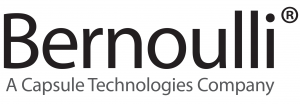Virtua: Implementing Capnography in Low Acuity Settings
AAMI Foundation Safety Innovations
Virtua: Implementing Capnography in Low Acuity Settings
 In 2013, the Virtua (1,009 beds across three hospitals) prioritized narcotic safety. The hospital system responded by implementing non-invasive capnography monitoring and continuous pulse oximetry monitoring on medical-surgical units. Capnography is used to measure exhaled end-tidal carbon dioxide (EtCO2) and inhaled carbon dioxide (FiCO2) to determine a patient’s respiratory rate and generate waveforms (i.e., capnograms) of exhaled carbon dioxide over time. However, unlike conventional capnography, which requires patients to be intubated to sample a patient’s inhalations and exhalations, thus restricting its use to critical care areas and operating rooms, non-invasive capnography uses nasal or oral-nasal sampling tubing that is worn over the nose (and sometimes mouth) to collect respiratory data, making it practical for use anywhere in a hospital.
In 2013, the Virtua (1,009 beds across three hospitals) prioritized narcotic safety. The hospital system responded by implementing non-invasive capnography monitoring and continuous pulse oximetry monitoring on medical-surgical units. Capnography is used to measure exhaled end-tidal carbon dioxide (EtCO2) and inhaled carbon dioxide (FiCO2) to determine a patient’s respiratory rate and generate waveforms (i.e., capnograms) of exhaled carbon dioxide over time. However, unlike conventional capnography, which requires patients to be intubated to sample a patient’s inhalations and exhalations, thus restricting its use to critical care areas and operating rooms, non-invasive capnography uses nasal or oral-nasal sampling tubing that is worn over the nose (and sometimes mouth) to collect respiratory data, making it practical for use anywhere in a hospital.
This paper details Virtua’s journey of implementation of non-invasive capnography, highlighting how barriers were overcome, sharing key factors for success, and describing the ongoing challenges of effectively monitoring patients receiving intravenous opioids for pain management.
The capnography monitoring implementation experience at Virtua provides a prototype of how a team, through persistent advocacy, can influence their organization to change practice and leverage its best asset—staff across all disciplines—to improve the quality of patient care.

